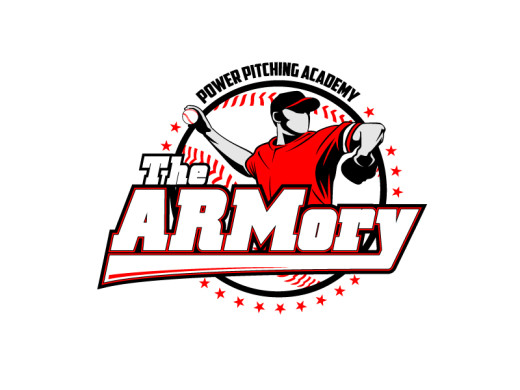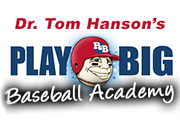Hey Pitcher! Does Your Game Need a Boob Job?
When I joined the US Air Force in 1986, I was 23 years old,
and I was a Missile Launch Officer.
Basically, I was trained to launch nuclear weapons
that could end the world as we know it.
How comforting is that?
Those who know me the best are probably shuddering as they read this.
The first requirement was to spend 4 months in training
at Vandenberg Air Force Base in California.
During my initial 3 weeks of training I became very good friends with another
Second Lieutenant named Gene Madigan.
I called him “Gene, Gene, The Dancing Machine”
which was ironic because he didn’t dance at all.
He was from Vermont and had been the captain of the pistol team at his military college.
Shortly after our training began,
we were told we would have to qualify with a .38 caliber pistol.
I had never held a gun in my hand,
and I wasn’t sure what it meant to “qualify”,
but it sounded to me like a competition, so I was ready to give it try.
Gene was sort of bored with the idea.
The first half of qualification day was mostly lecture.
Education on handling and cleaning the weapon,
gun and range safety, and training on the most effective techniques
for firing accurately, etc…
I didn’t really pay close attention.
I did catch these 2 nuggets of information:
1) If you failed to qualify the first time around,
you would be brought back for 3 remedial training sessions
and then you had to try again.
2) If you qualified that day, they would pin a ribbon on your chest.
When we got to the gun range for the actual testing,
I quickly realized I had no idea what I was doing,
so I made sure to position myself in the lane next to Gene.
If you want to be a millionaire,
hang out with a lot of rich guys.
If you want to be an expert marksman,
hang out with the captain of the pistol team.
As the testing commenced,
we were asked to fire 36 shots at a target down range.
The shooters in the class were lined up about 20 abreast.
I looked down range at the by side-by-side targets.
They all looked the same and seemed really close together.
Soon the Range Master yelled “Fire!”
I glanced at Gene, and he was firing away,
so I pretty much just started shooting.
No aim, no technique. Just shooting.
When the range was clear,
the instructors went to each man one by one,
rolled the target up on a zip line, and told him the score.
The sergeant got to my lane first,
so Gene waited patiently to my right.
He rolled my target up, and counted the number of bullet holes.
“Congratulations Lieutenant Sullivan.
36 head shots qualifies you as an expert marksman.”
He saluted and pinned a light blue ribbon on my chest.
I couldn’t believe it! I was grinning ear to ear!
At that moment Gene jumped in and said,
“Wait! That was your target? That’s the one I was shooting at!”
The Sergeant pulled in the target from Gene’s lane and said,
“Lieutenant Madigan, you have zero hits on target.
Here is your appointment card for remedial training beginning at 0600 tomorrow.”
I could hardly contain my laughter and bolted out of there as quickly as I could
before they changed their minds.
As Gene caught up with me I was practically rolling on the floor.
He then made an astute observation.
“Do you realize what just happened? I shot your target in the head 36 times.
You had exactly 36 holes on your target.
That means you hit your target exactly zero times!
You have a ribbon, and I have remedial training!”
My laughter trailed off into “Yeah. How ’bout that?”
That story parallels my history as a pitching coach.
For the first 16 years, I taught what I knew.
I told my pitchers to be mechanically precise.
We choreographed their movements and rehearsed endlessly.
“Up, down, out, drift to landing.”
“Ready, flex, throw.”
I said, “Don’t worry about velocity. Just throw strikes.”
I taught it well. I was “an expert”
We did a lot of towel drills.
We won a lot of games.
And no one cared.
When my first generation of pitchers came of age,
I constantly watched the college recruiters and pro scouts
pack their radar guns and walk away.
Sure I was an expert, but like Lt. Gene at the pistol range,
I was shooting at the wrong target.
Velocity does matter, because as my friend, Ron Wolforth,
says in his new book,
“A Parent’s Survival Guide: For The Parent Of The Elite Pitcher.”
Velocity = Opportunity.
We all know there’s much more to pitching than throwing hard.
But throwing hard gets you an invitation to the dance at the next level.
That’s what the scouts are looking for!
You can debate it, resist it, and argue it. But it won’t change.
Here’s the cold hard truth:
If you’re a right handed pitcher in the summer before your
senior year of high school, and you’re not throwing your fastball 88-92 mph,
your options are going to be limited.
I don’t care how well you pitch, what kind of breaking ball or change up you have,
or how many games you win.
It won’t matter.
Think of it like this:
By entering the recruiting circuit in search of a college scholarship or pro contract,
you are voluntarily becoming a contestant in a beauty pageant.
The judges have said they are looking for girls with big boobs, and you’re an A cup.
You can argue all you want about how unfair and ridiculous it is,
but if you want to win the pageant,
you’d better go get a boob job!
The 90 mph fastball is your boob job!
And I am your plastic surgeon.
Since 2009, I have feverishly researched velocity development,
and have completely revised my approach to teaching pitchers.
At The ARMory, we help guys gain mph!
It’s an indisputable truth.
In the last 2 years 23 of our guys have eclipsed the 90 mph threshold,
and 2 have gotten above 95.
It’s never too soon to start.
We train pitchers from ages 8-24.
We use the radar gun as a tool for developing velocity
and for tracking progress in all of them.
Of course, the younger guys are treated differently than the older guys.
But the radar gun, if properly used, provides excellent biofeedback
and is a valuable tool for all ages.
If your current pitching coach isn’t keenly aware of the most recent research
in velocity development;
if velocity development isn’t your number one priority;
if you aren’t regularly measuring and tracking your velocity
with a reliable and accurate radar gun,
you need consider a change.
If not you may find yourself going home early
as the first runner up for the miss congeniality award.









Leave a Reply